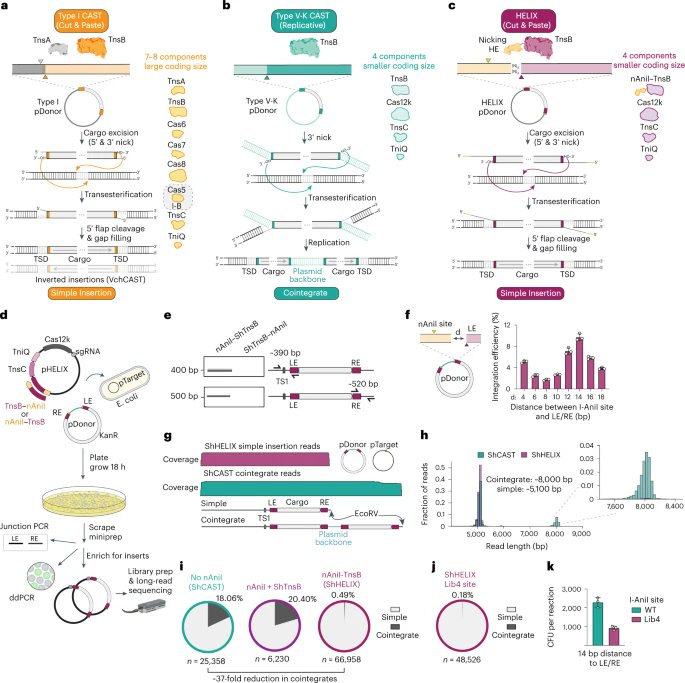Powerful CRISPR: Precise Whole Gene Insertion Into Human DNA

Table of Contents
Understanding CRISPR-Cas9 Technology and its Role in Gene Insertion
The Mechanism of CRISPR-Cas9
CRISPR-Cas9, a revolutionary gene editing tool, utilizes a guided enzyme system to precisely modify DNA. At its core lies the Cas9 enzyme, a molecular scissor that cuts DNA. This cutting is guided by a short RNA molecule, known as guide RNA (gRNA), which is designed to bind to a specific target sequence in the genome. Once bound, Cas9 creates a double-stranded break at the target site. This break then triggers the cell's natural DNA repair mechanisms. The process of CRISPR gene insertion leverages this mechanism to introduce a new gene at the precise location of the break. The precision of CRISPR-Cas9 lies in the specificity of the gRNA: a carefully designed gRNA ensures that the Cas9 enzyme cuts only at the intended genomic location. Key terms here are guide RNA, Cas9 enzyme, DNA cleavage, and target sequence.
Advantages of CRISPR-Cas9 over other gene editing techniques
CRISPR-Cas9 offers significant advantages over older gene editing technologies like Zinc Finger Nucleases (ZFNs) and Transcription Activator-Like Effector Nucleases (TALENs). These older methods are more complex, less efficient, and more costly to design and implement. CRISPR's ease of use, higher efficiency in gene targeting, and lower cost have made it the preferred method for many genome editing applications. This efficiency contributes significantly to its widespread adoption in precision medicine and genome editing research. Furthermore, the ability to multiplex – editing multiple genes simultaneously – further enhances its power and versatility.
- Higher efficiency in gene targeting.
- Lower cost compared to other gene editing methods.
- Simpler design and implementation.
- Potential for multiplexing (editing multiple genes simultaneously).
The Process of Precise Whole Gene Insertion using CRISPR
Designing the Guide RNA and Donor DNA
Precise CRISPR gene insertion requires meticulous design of both the guide RNA (gRNA) and the donor DNA template. The gRNA must perfectly match the target sequence in the genome where the new gene will be inserted. The donor DNA template carries the gene to be inserted, flanked by sequences homologous to the regions surrounding the target site. This homology is critical for homology-directed repair (HDR), the cellular mechanism that uses the donor DNA as a template to repair the Cas9-induced double-stranded break, effectively inserting the new gene into the genome. Keywords like homology-directed repair, donor template, gene replacement, and knock-in are essential here.
Delivery Methods for CRISPR-Cas9 System
Efficient delivery of the CRISPR-Cas9 system into human cells is crucial for successful gene insertion. Several methods exist, each with its advantages and disadvantages. Viral vectors, such as adeno-associated viruses (AAV) and lentiviruses, are commonly used due to their high efficiency in delivering genetic material into cells. However, concerns regarding immunogenicity and insertional mutagenesis exist. Non-viral methods, including electroporation (using electric pulses to create pores in the cell membrane) and lipid nanoparticles (encapsulating the CRISPR components), offer alternatives, though often with lower efficiency. Keywords to consider are viral delivery, non-viral delivery, transfection, and gene therapy.
- Detailed explanation of homology-directed repair (HDR) mechanism.
- Comparison of different delivery methods and their advantages/disadvantages.
- Safety considerations related to delivery methods.
Applications of Precise CRISPR Gene Insertion in Human Therapeutics
Treating Genetic Diseases
The potential of CRISPR gene insertion for treating genetic diseases is immense. Many inherited disorders, like cystic fibrosis, sickle cell anemia, and hemophilia, result from mutations in single genes. CRISPR technology offers the possibility of correcting these defects by precisely inserting a functional copy of the gene. This approach represents a paradigm shift in gene therapy, offering the potential for a permanent cure rather than just symptomatic treatment. Keywords include gene therapy, genetic disorders, disease modeling, and therapeutic applications.
Cancer Immunotherapy
CRISPR gene insertion also holds promise for revolutionizing cancer immunotherapy. By modifying immune cells (like T cells) to express chimeric antigen receptors (CARs), researchers aim to create more effective CAR T-cell therapies. These engineered cells can specifically target and destroy cancer cells with enhanced precision. CRISPR's precise editing capabilities allow for the efficient insertion of CAR genes, creating more potent and specific anti-cancer immune responses. Keywords relevant here include CAR T-cell therapy, immunomodulation, oncology, and cancer treatment.
- Specific examples of genetic diseases that could benefit from CRISPR gene insertion.
- Discussion of ongoing clinical trials using CRISPR for gene therapy.
- Ethical considerations and challenges related to CRISPR gene editing.
Challenges and Future Directions of CRISPR Gene Insertion
Off-target Effects
While CRISPR-Cas9 is highly precise, the possibility of off-target effects – unintended edits at other genomic locations – remains a concern. These off-target mutations could have unpredictable consequences. Researchers are actively developing strategies to improve target specificity, including refined gRNA design and the use of high-fidelity Cas9 variants. Minimizing off-target effects is crucial for ensuring the safety and efficacy of CRISPR-based therapies. Keywords here include genome integrity, target specificity, and off-target mutations.
Ethical Considerations and Regulatory Aspects
The power of CRISPR gene editing raises significant ethical considerations and regulatory challenges. The potential for germline editing – modifying genes that are passed on to future generations – requires careful ethical scrutiny. Regulatory frameworks are still evolving, requiring careful consideration of safety and efficacy before CRISPR-based therapies can be widely adopted. Keywords to consider are bioethics, clinical trials, regulatory approval, and gene editing guidelines.
- Strategies to improve target specificity.
- Current regulatory frameworks and guidelines for CRISPR gene editing.
- Future research directions to enhance the safety and efficacy of CRISPR.
Conclusion
CRISPR gene insertion offers a powerful and precise tool for modifying the human genome, holding immense potential for treating genetic diseases and advancing cancer immunotherapy. While challenges remain, particularly concerning off-target effects and ethical considerations, ongoing research is rapidly addressing these issues. The future of CRISPR gene insertion is bright, promising a new era of personalized medicine and innovative therapies. Explore the possibilities of CRISPR gene insertion and learn more about CRISPR-based gene therapies – discover the future of precise gene editing.

Featured Posts
-
 Vermisstes Maedchen 13 Polizei Veroeffentlicht Foto Und Sucht Zeugen
May 30, 2025
Vermisstes Maedchen 13 Polizei Veroeffentlicht Foto Und Sucht Zeugen
May 30, 2025 -
 Us Energy Policy Expert Concerns Over Potential Price Hikes For Consumers
May 30, 2025
Us Energy Policy Expert Concerns Over Potential Price Hikes For Consumers
May 30, 2025 -
 Four Special Gorillaz Live Shows Announced For September
May 30, 2025
Four Special Gorillaz Live Shows Announced For September
May 30, 2025 -
 Casper Ruuds Knee Injury Costs Him Roland Garros Match Against Nuno Borges
May 30, 2025
Casper Ruuds Knee Injury Costs Him Roland Garros Match Against Nuno Borges
May 30, 2025 -
 Selena Gomez Achieves Top 10 Without An Official Single
May 30, 2025
Selena Gomez Achieves Top 10 Without An Official Single
May 30, 2025
